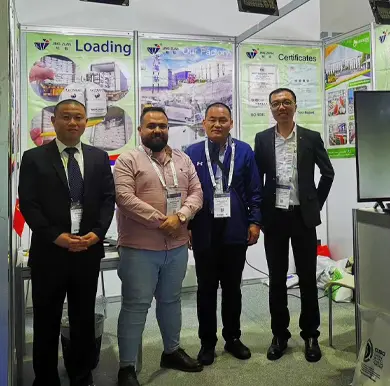
Dec . 04, 2024 11:20 Back to list
Exploring RDP Polymer Innovations and Their Applications in Modern Technology
Understanding RDP Polymer A Breakthrough in Material Science
RDP polymer, or Redispersible Polymer Powder, represents a significant advancement in the field of polymer technology, particularly in construction and building materials. This versatile polymer is widely used for its unique properties that enhance the performance of various applications, from adhesives and sealants to cement-based compounds and coatings.
What is RDP Polymer?
RDP polymer is a type of polymer that is produced as a dry powder. When mixed with water, it redisperses to form a milky liquid that can be applied in different formulations. The primary ingredients of RDP include various types of styrene-acrylic and ethylene-vinyl acetate copolymers. These polymers play a crucial role in improving the mechanical and physical properties of construction materials.
Benefits of RDP Polymer
1. Enhanced Adhesion One of the most significant benefits of RDP polymer is its ability to improve the adhesion properties of formulations. When incorporated into tile adhesives, for example, RDP enhances the bond strength between tiles and substrates, ensuring long-lasting results.
2. Flexibility and Elasticity When mixed with cement-based materials, RDP provides flexibility and elasticity, which are essential for accommodating thermal expansion and contraction. This quality is vital in preventing cracks in structures, thus extending the life of the application.
3. Water Resistance RDP polymer contributes to improved water resistance in various applications. This resistance is particularly advantageous in environments prone to moisture, such as bathrooms and kitchens.
4. Workability The incorporation of RDP in construction materials enhances workability, allowing for easier application and manipulation. This property not only saves time during the construction process but also improves the overall quality of workmanship.
5. Durability Materials treated with RDP polymer tend to have increased durability. The polymer imparts resistance to environmental factors such as UV radiation, moisture, and chemicals, making it ideal for both interior and exterior applications.
rdp polymer

Applications of RDP Polymer
RDP polymer finds uses in a wide range of construction applications
- Tile Adhesives Widely used in the formulation of tile adhesives, RDP enhances the bonding properties and durability of the adhesive.
- Render and Plaster In render and plaster formulations, RDP improves adhesion and flexibility, making it suitable for different substrates.
- Self-leveling Compounds RDP is often added to self-leveling compounds to enhance flowability and adhesion, allowing for smooth finishes.
- Paints and Coatings In paints, RDP improves consistency, reduces sagging, and provides better durability to coatings.
- Mortars RDP enhances the performance of both dry-mix mortars and wet-mix applications, contributing to stronger bonds and overall longevity.
Conclusion
The development of RDP polymer has transformed the landscape of construction materials, offering solutions that address the various challenges faced in the industry. With its remarkable properties, RDP polymer remains an invaluable resource for architects, engineers, and construction professionals. Its ability to enhance adhesion, flexibility, and durability makes it an essential ingredient in many products that define modern construction practices. As the demand for high-performance materials continues to grow, RDP polymer is poised to play a crucial role in the advancement of sustainable and enduring construction solutions. Through innovative applications and ongoing research, the potential of RDP polymer stands to redefine material science for years to come.
-
Versatile Hpmc Uses in Different Industries
NewsJun.19,2025
-
Redispersible Powder's Role in Enhancing Durability of Construction Products
NewsJun.19,2025
-
Hydroxyethyl Cellulose Applications Driving Green Industrial Processes
NewsJun.19,2025
-
Exploring Different Redispersible Polymer Powder
NewsJun.19,2025
-
Choosing the Right Mortar Bonding Agent
NewsJun.19,2025
-
Applications and Significance of China Hpmc in Modern Industries
NewsJun.19,2025







